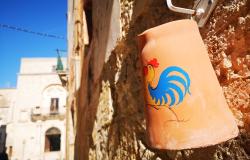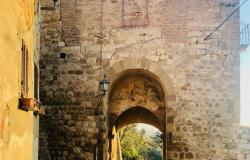The Mona Lisa Mystery
ITA:

The history of the Mona Lisa is shrouded in mystery. Today, researchers have not been able to determine for sure who commissioned the portrait, how long Leonardo worked on the painting, how long he kept it, how it ended up in the French royal collection, and the most intriguing aspect of all: the identity of the model.
It is thought that Leonardo began working on the painting in Florence around 1503. Many believe it is the portrait of Lisa Gherardini, the wife of a Florentine cloth merchant named Francesco del Giocondo - hence the name in Italian, La Gioconda.
Archaeologists excavating under the Sant'Orsola convent in Florence, where Gherardini spent the last years of her life, have found bones which they believe belong to the woman. Just last week, they announced that carbon-14 testing showed the bones date from around the time Gherardini died, in 1542.
However, other scholars say the remains could belong to someone else as dozens of bodies were buried beneath the convent over the course of several decades. Only DNA testing compared with DNA from the remains of two of Gherardini’s children will determine if the bones belong to the woman. Unfortunately, the skull, which would have helped determine if she was Leonardo’s model, is missing.
And even if it is proven that the bones belong to Gherardini, there is no general consensus over whether she was the model or not. Some say Leonardo used a male model; others say that the artist did a self-portrait in disguise or used several models.
The Mona Lisa mystery seems to remain so. Perhaps rightly so – after all, it is what makes this masterpiece so mesmerizing.
La vicenda della Gioconda è avvolta nel mistero. Ancora oggi, i ricercatori non sono in grado di determinare con certezza chi ha commissionato il ritratto, per quanto tempo Leonardo ha lavorato al dipinto, per quanto tempo lo ha conservato, come sia finito nella collezione reale francese, e nemmeno l'aspetto più intrigante di tutti: l'identità del soggetto.
Si ritiene che Leonardo abbia iniziato a lavorare al dipinto a Firenze intorno al 1503. Molti credono che sia il ritratto di Lisa Gherardini, moglie di un mercante di stoffe fiorentino chiamato Francesco del Giocondo - da qui il nome in italiano, La Gioconda.
Una squadra di archeologi ha effettuato una serie di scavi sotto il convento di Sant'Orsola a Firenze, dove la Gherardini trascorse gli ultimi anni della sua vita, e ha trovato delle ossa che credono possano appartenere alla donna. Proprio la scorsa settimana, la squadra ha annunciato che i risultati del test al carbonio-14 dimostrano che le ossa risalgono al periodo in cui la Gherardini morì, nel 1542.
Tuttavia, altri studiosi sostengono che i resti potrebbero appartenere a qualcun altro in quanto decine di corpi sono stati sepolti sotto il convento nel corso di diversi decenni. Solo il test del DNA confrontato con il DNA dei resti di due figli della Gherardini potrà determinare se le ossa appartengono effettivamente a lei. Purtroppo, il teschio, che avrebbe aiutato a stabilire se la donna sia stata la modella di Leonardo, è assente.
E anche se sarà provato che le ossa appartengono alla Gherardini, non c’è un consenso generale sul fatto che sia proprio lei il soggetto del ritratto. Alcuni dicono che Leonardo abbia utilizzato un modello maschile; altri dicono che l'artista abbia realizzato un autoritratto mascherato o utilizzato diversi modelli.
Il mistero della Gioconda sembra rimanere tale. Ma forse è giusto così - dopo tutto, è ciò che rende questo capolavoro così affascinante.











